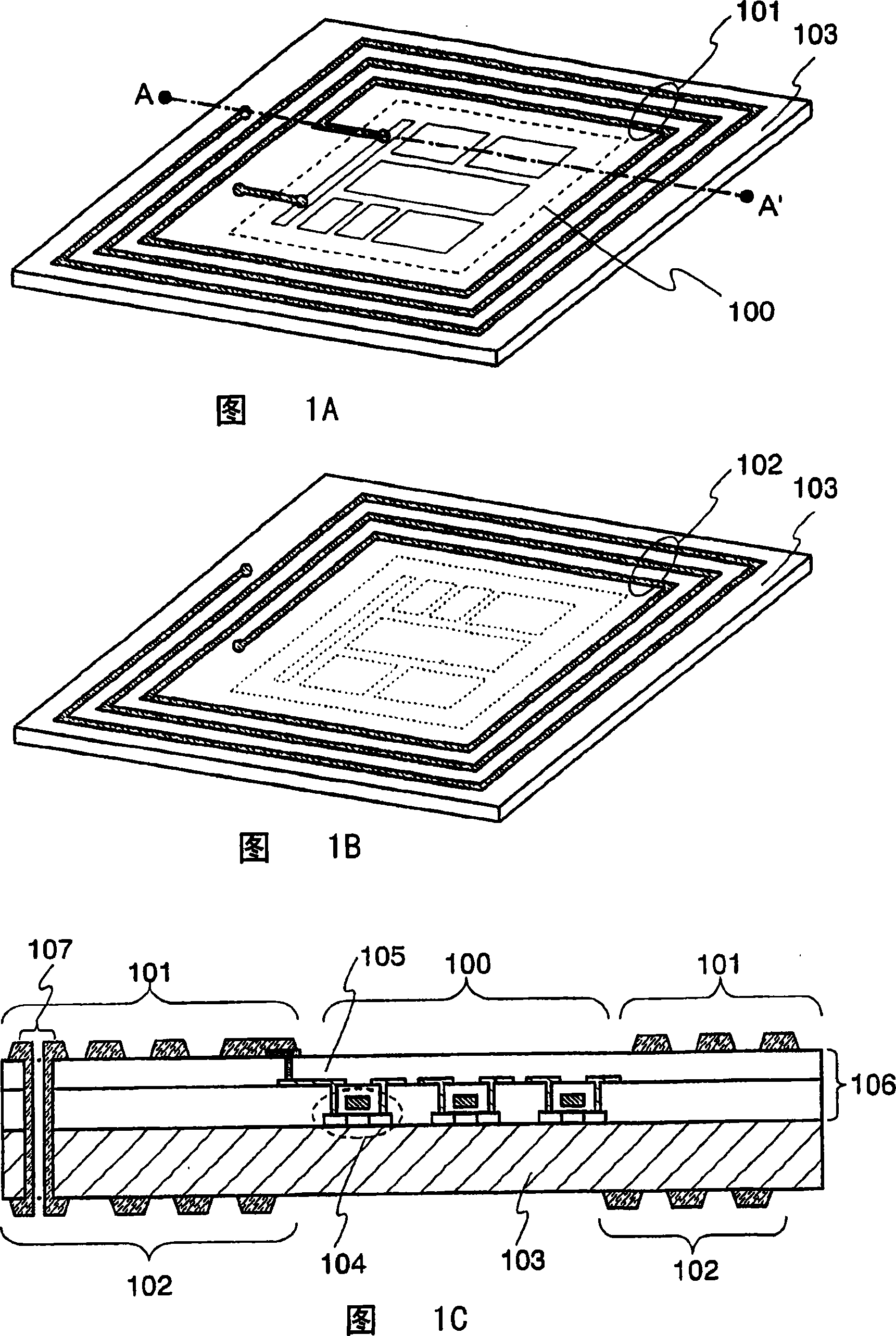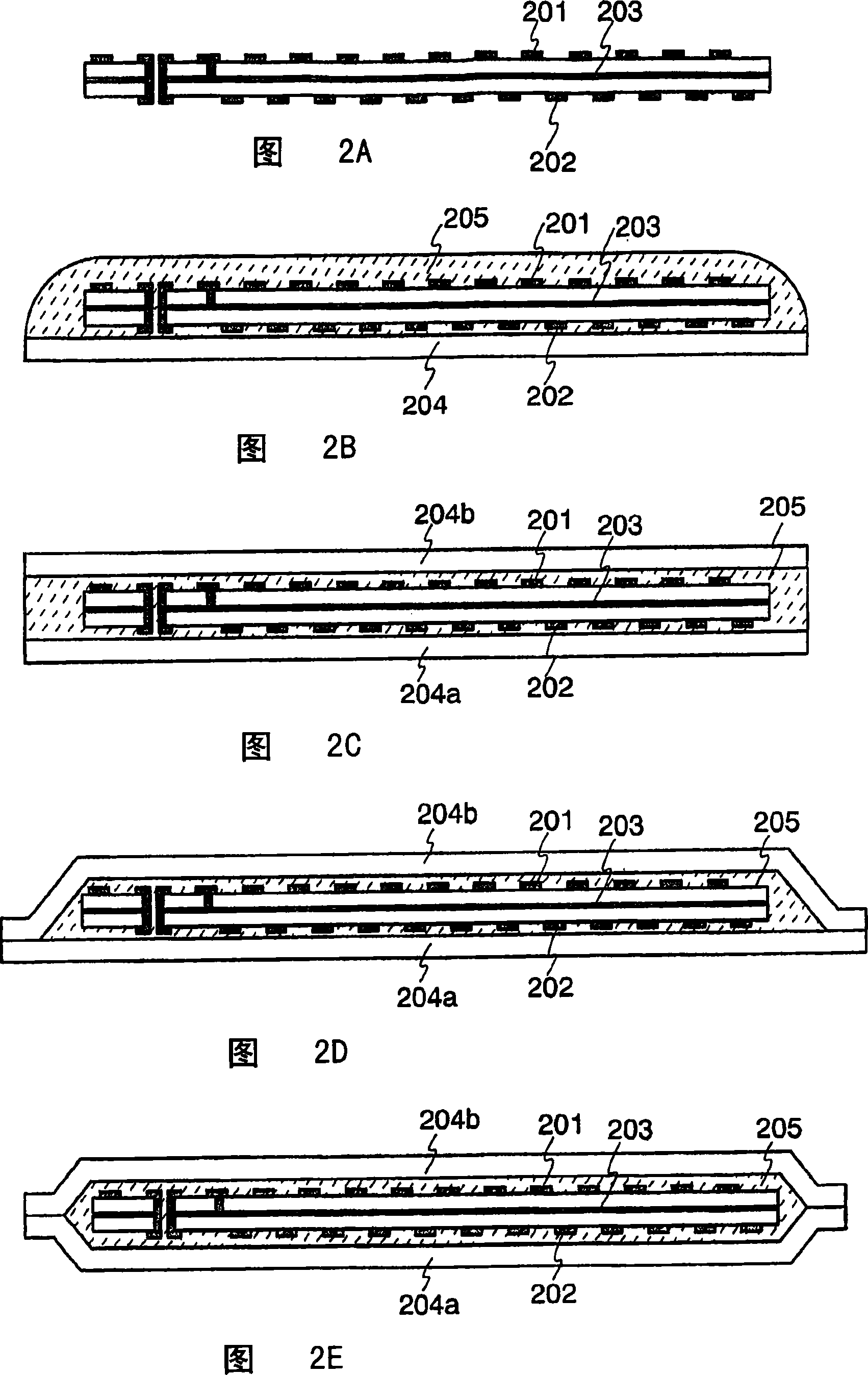Semiconductor device
A technology for semiconductors and devices, applied in the field of semiconductor devices, can solve the problems of reducing the area of integrated circuits, difficulty in circuit scale, and restrictions on the use of ID chips, and achieve the effects of reducing connection failures, enhancing gain, and easing size constraints
- Summary
- Abstract
- Description
- Claims
- Application Information
AI Technical Summary
Problems solved by technology
Method used
Image
Examples
Embodiment 1
[0102] A specific method for manufacturing the ID chip of the present invention will be described. In this embodiment, a TFT is given as an example of a semiconductor element. However, semiconductor elements used in integrated circuits are not limited thereto, and various circuit elements may be used.
[0103] As shown in FIG. 10A , a separation layer 501 is formed over a heat-resistant first substrate 500 . For example, a glass substrate such as barium borosilicate glass or aluminoborosilicate glass, a quartz substrate, a ceramic substrate, etc. may be used for the first substrate 500 . In addition, a metal substrate including a SUS substrate or a semiconductor substrate may be used. Substrates made of a flexible synthetic resin such as plastic generally tend to be less resistant to high temperatures than the substrates described above. However, such a substrate made of synthetic resin can be used as long as it can withstand the processing temperature in the manufacturing ...
Embodiment 2
[0174] In this embodiment, a method for manufacturing a plurality of ID chips using a large substrate will be described.
[0175] A plurality of integrated circuits 401 are formed over a substrate 400 . Thereafter, a contact hole 403 for connecting a first wire 404 and a second wire 405 to be formed later is formed. FIG. 16A shows a state where a plurality of integrated circuits 401 corresponding to each ID chip are formed over a substrate 400 . FIG. 16B shows an enlarged view of the area surrounded by the dashed line 402 of FIG. 16A.
[0176] Next, a first wire 404 is formed on the side where the integrated circuit 401 is formed, and a second wire is formed on the side opposite to the side where the integrated circuit 401 is formed. FIG. 16C shows an enlarged view of the area surrounded by the dashed line 402 in FIG. 16A after the first wire 404 is formed. As shown in FIG. 16C , the first wire 404 is formed to overlap the contact hole 403 . Accordingly, the first wire 404...
Embodiment 3
[0181] In this embodiment, the structure of a TFT used in the ID chip of the present invention will be described.
[0182] FIG. 17A shows a cross-sectional view of a TFT according to this embodiment. Reference numeral 701 denotes an n-channel TFT; 702, a p-channel TFT. The structure of the n-channel TFT 701 will be described in detail as an example.
[0183] An n-channel TFT 701 includes an island-shaped semiconductor film 705 serving as an active layer. The island-shaped semiconductor film 705 includes two impurity regions 703 serving as source and drain regions, a channel formation region 704 sandwiched between the two impurity regions 703, and a channel formation region 704 sandwiched between the impurity regions 703 and the channel formation region 704. Two LDD (Lightly Doped Drain) regions 710. The n-channel TFT 701 further includes a gate insulating film 706 covering the island-shaped semiconductor film 705, a gate electrode 707, and two side walls 708 and 709 made of...
PUM
 Login to View More
Login to View More Abstract
Description
Claims
Application Information
 Login to View More
Login to View More - R&D
- Intellectual Property
- Life Sciences
- Materials
- Tech Scout
- Unparalleled Data Quality
- Higher Quality Content
- 60% Fewer Hallucinations
Browse by: Latest US Patents, China's latest patents, Technical Efficacy Thesaurus, Application Domain, Technology Topic, Popular Technical Reports.
© 2025 PatSnap. All rights reserved.Legal|Privacy policy|Modern Slavery Act Transparency Statement|Sitemap|About US| Contact US: help@patsnap.com



